Crossdreaming: Breaching Fantasy and Reality for Crossdressers
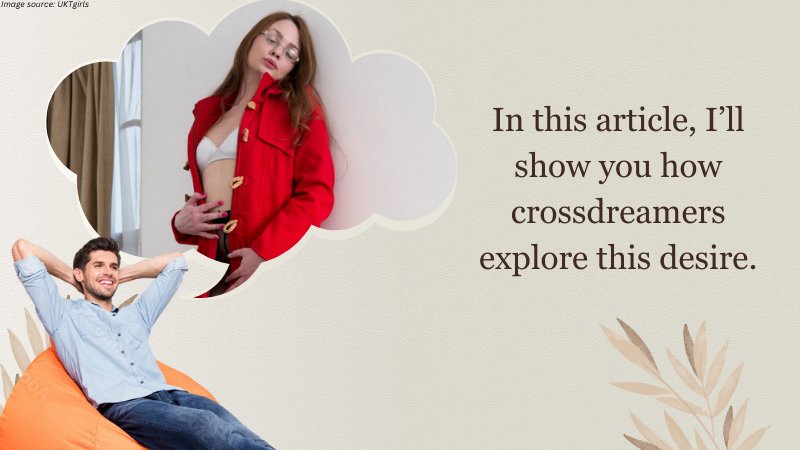
Have you ever heard of crossdreaming? Take a guess what it’s about!
If you guessed something along the lines of combining crossdressing and dreaming— congrats! Y
ou’re on the mark! Crossdreamers want to explore being another gender.
In this article, I’ll show you how crossdreamers explore this desire.
We’ll focus on how it connects to crossdressers and transgenders.
You’ll learn something new, so keep on reading!
Defining Crossdreaming
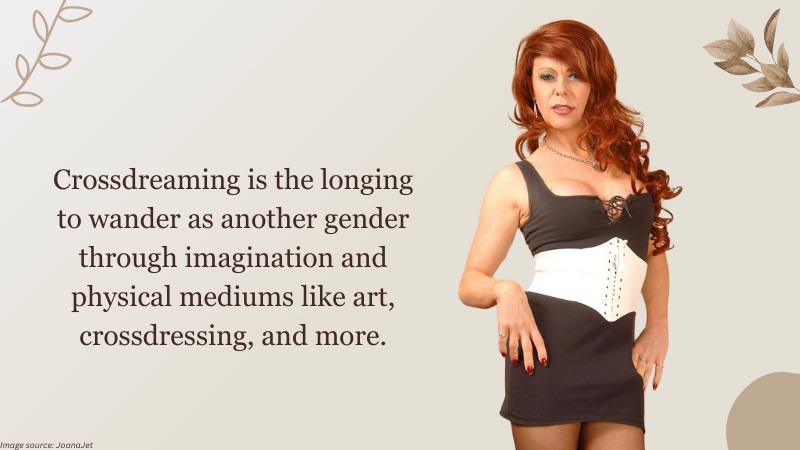
Crossdreaming is the longing to wander as another gender through imagination and physical mediums like art, crossdressing, and more.
Crossdreaming then, points to the emotional aspect of this act. Other ways to explore crossdreaming is through roleplay and cosplay.
Crossdreaming can involve both sexual and non-sexual fantasies.
If you’ve ever imagined what it’s like to be another gender, then you can consider yourself a crossdreamer.
Yes, even if you didn’t go past the imagining stage.
There are many definitions of crossdreaming littered across the web.
If you’re not careful enough, you might end up in dangerous territory that doesn’t explain the term.
Instead, these definitions are cleverly crafted to spread bigoted or prejudiced narratives.
Among these definitions, I find Jack Molay’s the most concrete.
I say this since Jack, who uses the pronouns they/them, is an MtF transgender, Jack can offer an experienced and nuanced take on the subject.
In 2008, Jack founded Crossdreamers.com to shield gender-curious people from misconstrued ideas.
The site was established after Jack realized the link between their existential crisis and gender dysphoria.
In hopes of assisting people to understand why they crossdream, Jack argued open discussions, one without judgment, should be maintained.
Terms You’ll See in Crossdreaming Discussions
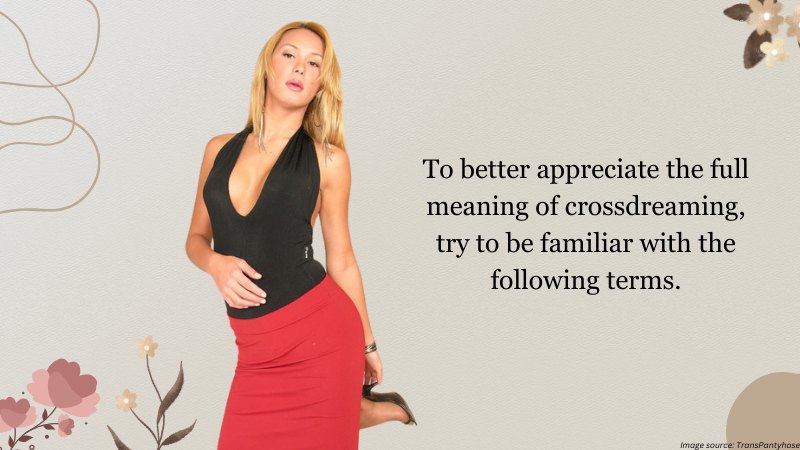
To better appreciate the full meaning of crossdreaming, try to be familiar with the following terms.
These terms are those I often come across in conversations about crossdreaming.
- Gender variance – The discrepancy between a person’s assigned and experienced gender.
It’s also used as an umbrella term to describe gender outside of traditional or cultural standards.
- Gender dysphoria – Its old term is “gender identity disorder” and refers to the discomfort associated with mismatched biological sex and gender identity.
This discomfort is so distressing that it affects the person’s daily life.
Note that gender dysphoria is not the same as gender incongruence.
- Gender euphoria – Recognized as the opposite term of gender dysphoria.
One can say then that gender euphoria is the relief or happiness felt when biological sex and gender identity align.
Crossdreamers and Crossdressers
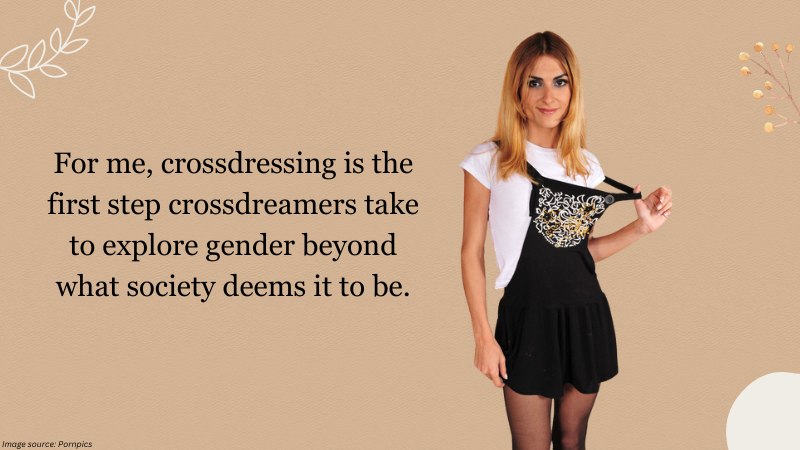
At this point, crossdreaming still casts a pretty large net that catches a colorful spectrum of identity, self-expression, and gender.
So, what’s the direct link between crossdreamers and crossdressers?
For me, crossdressing is the first step crossdreamers take to explore gender beyond what society deems it to be.
For those who crossdream, I believe, crossdressing is the physical manifestation of an individual’s desire to see what it feels to be “on the other side” of the established gender binary.
Note that this exploration doesn’t automatically point to someone wanting to transition or identify with another gender.
For instance, a crossdresser assigned male at birth can still identify as a male.
He may just want to check out the opportunities he’s missing when society stops him from owning his femininity.
Another instance is when a cis, MtF crossdresser visualizes what it’ll feel like to exchange bodies with his girlfriend during sex.
In the future, this visualization can translate to the physical world and the MtF crossdresser can use body-enhancing products like breast forms and even a realistic female mask to mimic his girlfriend.
Who Crossdreams?
No one knows just how many crossdreamers there are today. You can’t expect each crossdreamer to announce it, do you?
Plus, because of old societal rules, there’s still the ingrained shame and guilt attached to crossdreaming and crossdressing.
Even so, it’s safe to say that anyone can crossdream. There are also various reasons for anyone to crossdream.
The common groups who experience crossdreaming are listed below.
- Crossdressers
- Trans
- Non-trans
- Cis
- Non-binaries
- Femboys
- Sissies
- Drag queens and drag kings
Importance of Crossdreaming
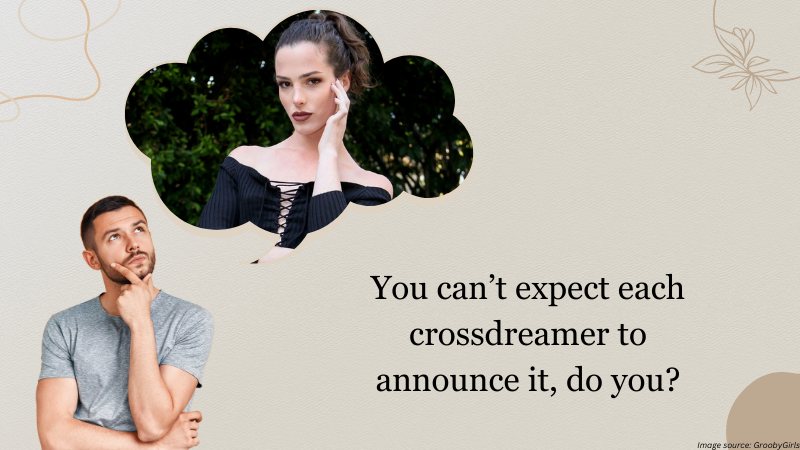
Just as gender is a colorful spectrum, the reasons that rally behind why crossdreaming occurs are just as vibrant.
Each crossdreamer can have different reasons, but the top ones are the following:
To Welcome Masculinity and Femininity
Each person has innate masculine and feminine characteristics.
What’s more intriguing is that a person’s assigned gender doesn’t automatically denote just how masculine or feminine someone can be.
This is why there are effeminate men (for example, femboy and sissy) or macho women (like tomboy and butch).
These individuals embody qualities of the opposite gender, but may still identify as straight.
Crossdreaming pushes us to accept both our masculinity and femininity— not suppress them.
It’s a direct contradiction to what society tells us to do, which is to walk away from the side our birth gender doesn’t correspond with.
This act promotes self and collective acceptance. It waves a flag that announces that gender isn’t limited to two genders.
The underlying message is: There’s nothing wrong with presenting yourself and failing to follow traditional expectations.
To Urge Boundless Imagination and Creativity
Crossdreaming urges us to tap into our inner worlds.
When we’re in our own universe, we aren’t subject to the physical world’s laws and limits.
We’re then free to explore territories we didn’t even dare to think about.
When we’re limitless, it’s easier to think outside the box and challenge conventional barriers.
This freedom of self-expression leads to innovation and higher artistic endeavors.
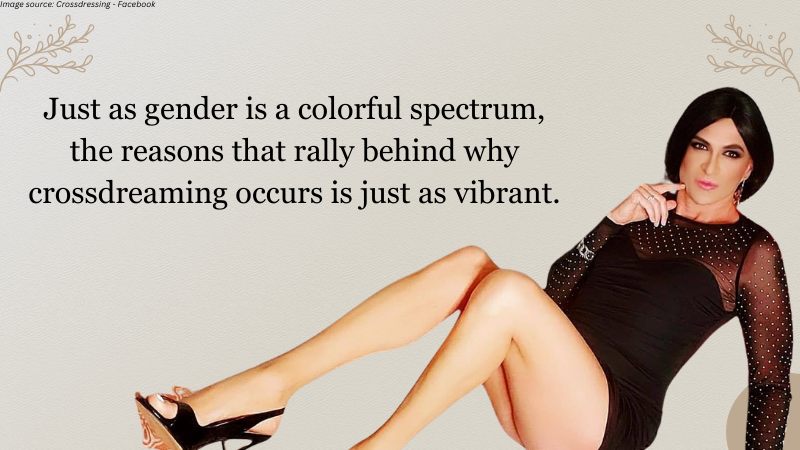
To Pinpoint and Nurture Gender Identity
When we crossdress, we can better understand our unique experiences and feelings towards our gender.
It’s a safe space for self-reflection and overall personal growth.
Eventually, through this process, we are led to an empowered version of ourselves.
To Experience Gender Euphoria
Many trans who suffer from gender dysphoria do so as they learn from society early on that what they’re feeling is “wrong.”
For these people, letting themselves crossdream and imagine being in the right body they feel they should be in can give them a sense of fulfillment or joy.
Expressing Your Crossdreams
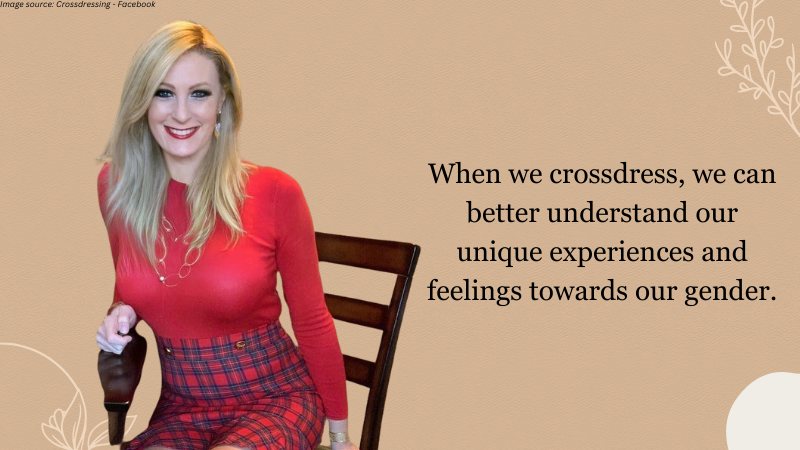
When it comes to exploring and expressing your crossdreams, there are various avenues you can take.
Crossdressing
Crossdressing allows people to step outside societal norms.
Crossdressing communities are especially helpful in assisting individuals in expressing themselves authentically, regardless of their assigned gender at birth. It can be a form of self-expression, a way to feel more comfortable in one’s own skin, or simply a way to have fun and experiment with different styles.
Femulating
Another way to express your crossdreams is through femulating, which involves emulating the characteristics and behaviors of the opposite gender.
This can include adopting different mannerisms, styles of speech, and even body language to fully immerse yourself in the experience of being the gender you identify with.
It can be a powerful way to explore and express your crossdreams in a more subtle and nuanced manner.
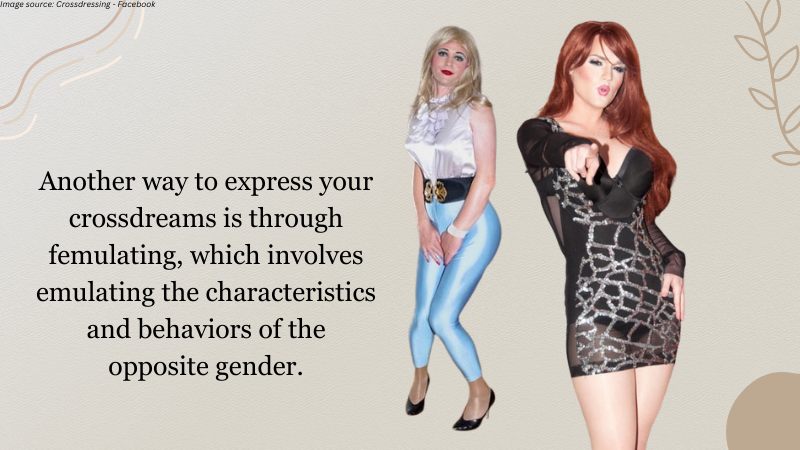
Crossenacting
It involves actively engaging in activities or roles typically associated with the opposite or target gender.
This could mean a man enjoying activities like cooking and cleaning, or a woman taking up traditionally male hobbies like woodworking or car repair.
Art
Another way to express your crossdreams is through art creation.
This can include various forms of art such as performance art like drag, comic making, songwriting, and more.
Through these creative outlets, you can explore and showcase different aspects of your crossdreams in a unique and expressive way.
Whether it’s through visual art, music, or storytelling, art creation allows you to delve into your fantasies and emotions surrounding your crossdreams.
Art creation also provides a platform for you to share your crossdreams with others and connect with like-minded individuals.
By showcasing your art, you can start conversations, raise awareness, and build a sense of community around crossdreaming.
Crossdreaming and the LGBTQ+ Community
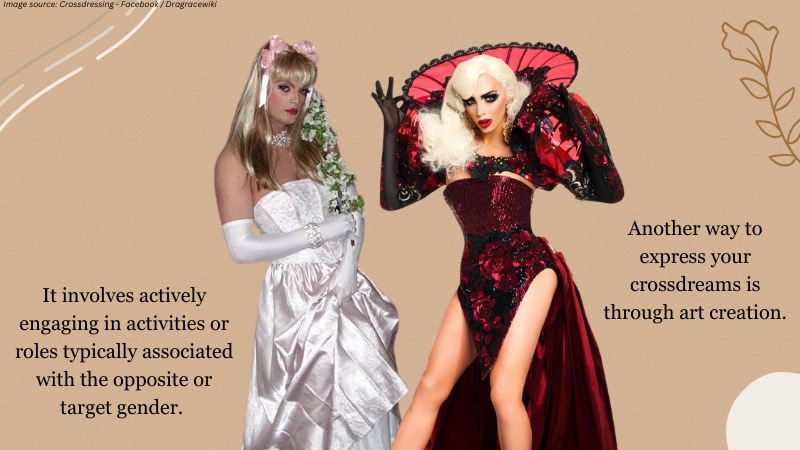
While crossdreaming is not exclusive to the LGBTQ+ community, it can intersect with aspects of gender identity and sexual orientation.
A common example is trans people crossdreaming before they realize their desire to transition.
Another is a gay man imagining himself as a woman during intimate activities.
Human sexuality is truly complex, and this overlap further proves that.
It’s crucial to always remember that crossdreaming doesn’t determine one’s sexual orientation or gender identity.
It’s simply a facet, a part of an individual’s experience that can be present within various identities in the LGBTQ+ group.
Some may find their crossdreaming matching with their gender identity. For others— they may not connect to it at all.
No matter the circumstance, remember to maintain respect for any individual when it comes to their encounters and choices of expressing their gender and identity.
Controversies with Crossdreaming
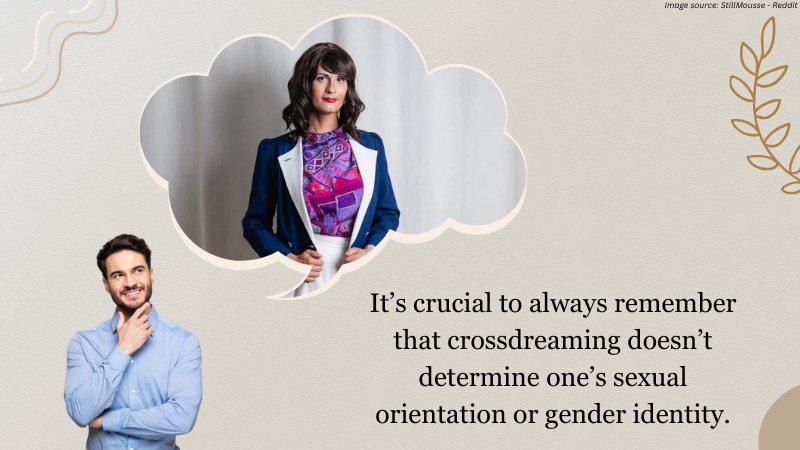
There’s no shortage of misconceptions surrounding the topic of crossdreaming.
For brevity’s sake, I’ll share with you the top three reasons why some assume crossdreaming is an ick.
Crossdreaming is just a fetish
Have you ever heard of Autogynephilia?
If you’ve been around doing research on crossdreaming, you’ve encountered this word at least once or twice.
It’s a medical term that describes a specific type of male arousal that happens when the subject imagines being a woman.
Do not— I repeat— do not mistake this term to be synonymous with crossdreaming.
To clear things up, they are not the same.
While crossdreaming includes dreamers who have erotic fantasies, sexual arousal isn’t its defining feature.
Crossdreaming taps on a broader range of feelings, preferences, and identities.
It’s unfair and deceitful to only focus and talk about crossdreaming as solely a fetish.
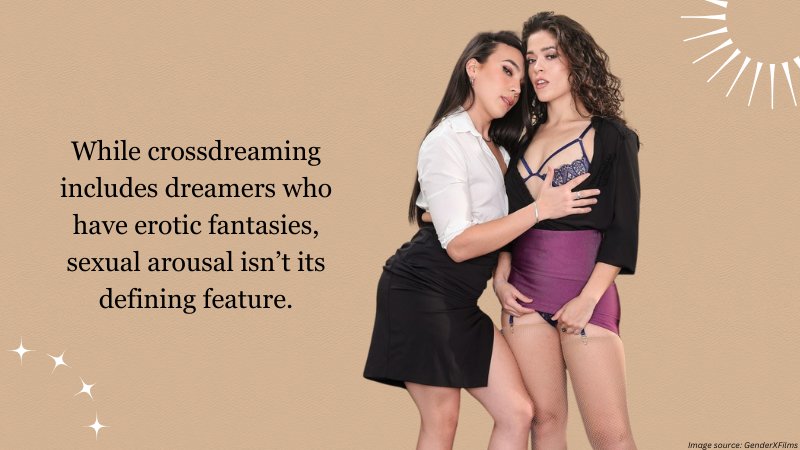
Crossdreaming is the same as midlife crisis
Frankly, it’s unfair to oversimplify crossdreaming as a type of midlife crisis.
While both crossdreaming and midlife crises have confused individuals wanting to “discover” or “find” themselves— they are radically different.
Midlife crisis happens when those in their 40s to 60s experience sudden emotional instability.
All those years that are supposed to make them wise? Gone through the window!
Their astuteness is replaced by impulsive behaviors and overindulgence.
Midlife crises are basically entering your Teenager 2.0 era.
In contrast, crossdreaming can happen to anyone, no matter their age.
It’s a deep-seated need to find out if you’re identifying with your correct gender.
Crossdreaming is a product of shame
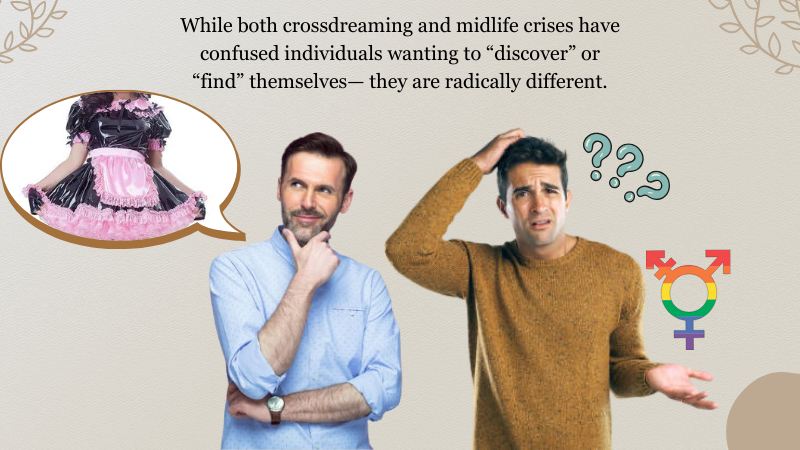
There are many harmful stereotypes but this one takes the cake.
When did finding ways to understand what you spurned by shame?
Isn’t it usually pushed by the longing to feel complete and satisfy your own curiosity?
True— going against societal norms and expectations around gender can make anyone feel embarrassed or frightened of being ridiculed.
But these feelings have nothing to do with crossdreaming itself.
Instead, it’s a valid and natural way to explore the diversity of gender and identity.
It’s more acceptable to say that crossdreaming stems from repressed feelings from a person’s subconscious.
It’s more acceptable to say that crossdreaming helps an individual ease the burden of being oblivious.
Future of Crossdreaming
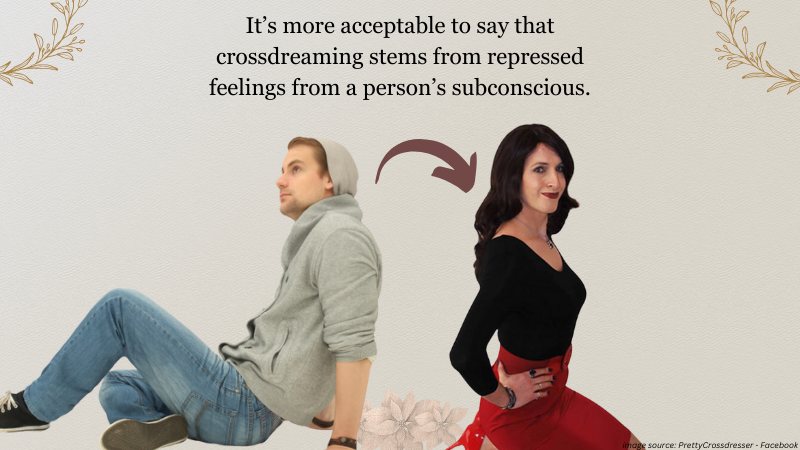
I’m looking forward to a future where crossdreaming is better understood and accepted.
This seems like a far-fetched idea, but everything’s possible!
But of course, this can only happen if society keeps an open mind and continues to evolve its attitudes towards gender expression.
What can we do to sustain this change? Promote awareness and education.
A shift in perspective is critical to having an inclusive and supportive environment for crossdreamers.
No more fear of being judged. No more fear of being discriminated against.
Gender identity is complex and diverse.
We only have so much time on earth— what’s wrong with wanting to express yourself in the most authentic way possible?
Conclusion
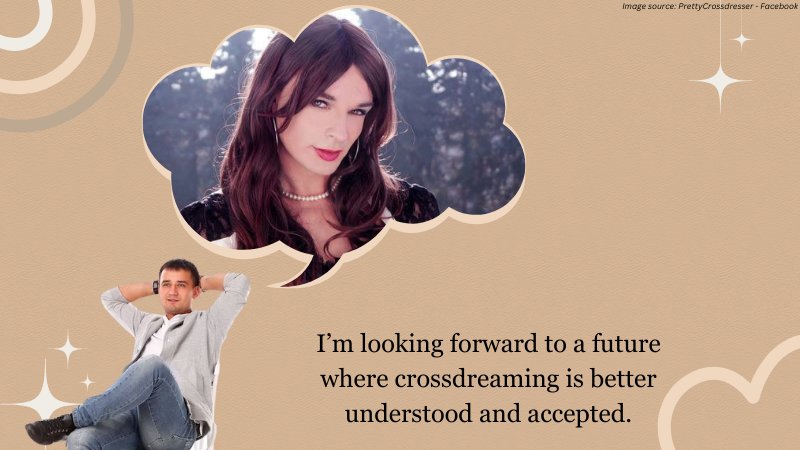
Crossdreaming is a unique and personal experience that should be celebrated rather than stigmatized.
By breaking down the barriers between fantasy and reality, those who crossdreams— crossdressers, trans, and others— can find a sense of fulfillment and self-acceptance.
Continue your exploration of this topic.
Look for support from like-minded individuals if you need to.
Most importantly, don’t dilly dally on learning about crossdreaming and how it can help you figure out your complete identity.
Looking for and meeting your authentic self is one of the most powerful steps you can take towards personal growth and happiness!
- How to Use Nipple Clamps in a Crossdressing Session?
- How to Win Any Crossdresser Sexy Legs Contest
- Tips for Feminizing a Closet Crossdresser
- Top 10 Slimming Poses for Chubby Crossdressers
- MTF Crossdressing Guide to Taking Sexy Nudes
- How to Be a Crossdressing Star: A Guide to Create Your Crossdressing Videos
- Personal story – Amelia’s First Time Coming Out of The Shadow
- Crossdreaming: Breaching Fantasy and Reality for Crossdressers
- Caught Wearing Sissy Panties: Top 5 Exhilarating Stories
- The 5 Best Crossdressing Stories to Inspire You on Your Journey
- Tim Cook Gay Story: Apple’s CEO Bold and Inspiring Journey
- My Travelling Experience as a Crossdresser
Established in 2009, We are a recognized manufacturer and seller of professional crossdressing products.
It is our aim to become not just the most creative manufacturer but also a very considerate seller, as we provide the best quality products for crossdressers all around the world.
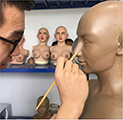
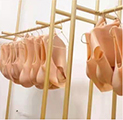







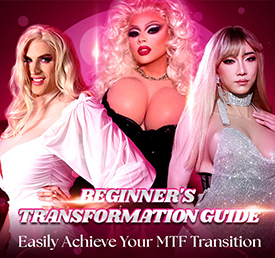








 Breast Forms
Breast Forms  Body Suit
Body Suit  Realistic Mask
Realistic Mask  Femini Girdle
Femini Girdle Hip & Butt Enhancement (8)
Hip & Butt Enhancement (8) Penis Prosthesis
Penis Prosthesis Fake Muscle
Fake Muscle Bikini
Bikini  Wig
Wig  Corsets
Corsets Course
Course service@roanyer.com
service@roanyer.com +8618652200711
+8618652200711 Facebook
Facebook YouTube
YouTube Twitter
Twitter Instagram
Instagram




